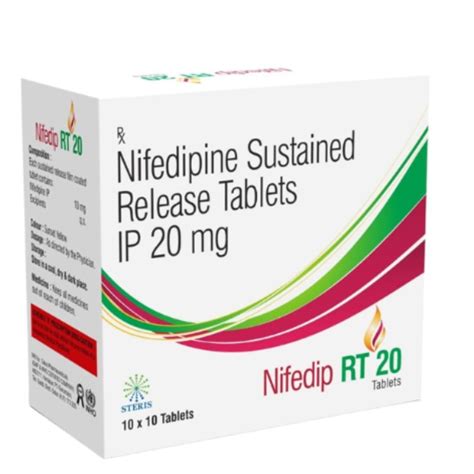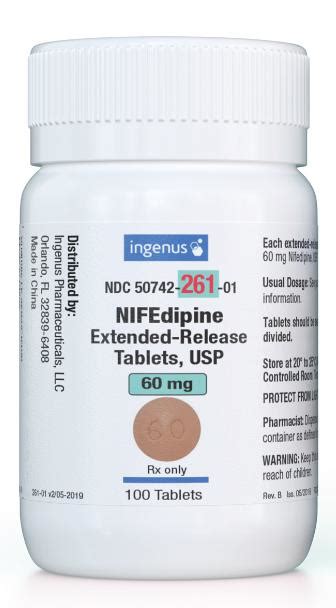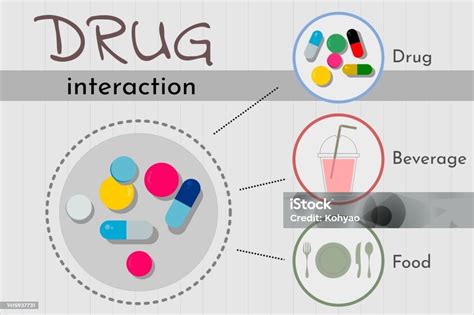Intro
Discover 5 uses of Nifedipine, a calcium channel blocker, for hypertension, angina, and other cardiovascular conditions, including its role in managing Raynauds phenomenon and premature labor.
Nifedipine, a calcium channel blocker, has been widely used in the management of various cardiovascular conditions. Its primary mechanism of action involves inhibiting the influx of calcium ions into cardiac muscles and vascular smooth muscles, thereby reducing peripheral resistance and lowering blood pressure. This action has led to its application in several therapeutic areas, making it a versatile medication in the field of cardiology.
The importance of understanding the uses of nifedipine cannot be overstated, given its widespread prescription and the potential for significant benefits in patients with specific conditions. By exploring the different applications of nifedipine, healthcare professionals and patients can better appreciate its role in managing cardiovascular health. Furthermore, recognizing the therapeutic potential of nifedipine can lead to improved treatment outcomes and enhanced quality of life for those affected by cardiovascular diseases.
The therapeutic landscape of cardiovascular diseases is complex and multifaceted, with various medications playing critical roles in management. Among these, nifedipine has carved out a niche for itself due to its efficacy in addressing certain key conditions. By delving into the specifics of nifedipine's uses, it becomes clear that its applications extend beyond mere blood pressure control, encompassing a range of cardiovascular health aspects.
Introduction to Nifedipine

Nifedipine is classified as a dihydropyridine calcium channel blocker, which distinguishes it from other types of calcium channel blockers like verapamil and diltiazem. This distinction is important because different calcium channel blockers have varying effects on cardiac conduction and contractility. Nifedipine's primary action is on vascular smooth muscle, leading to vasodilation and a subsequent decrease in blood pressure. This effect makes nifedipine particularly useful in the treatment of hypertension and other conditions characterized by vascular spasm or increased peripheral resistance.
Uses of Nifedipine

The therapeutic applications of nifedipine can be broadly categorized based on its mechanism of action and clinical efficacy. These uses include:
- Hypertension Management: Nifedipine is commonly prescribed for the treatment of essential hypertension. Its ability to cause peripheral vasodilation without significantly affecting cardiac output makes it an effective agent for lowering blood pressure.
- Angina Pectoris: By reducing myocardial oxygen demand through afterload reduction, nifedipine can help in managing angina. However, its use in this context is more nuanced and often considered when other options are not suitable or effective.
- Raynaud’s Phenomenon: The vasodilatory effect of nifedipine can provide relief in patients with Raynaud’s phenomenon, a condition characterized by episodic vasospasm of the fingers and toes.
- Hypertensive Emergencies: In certain cases, nifedipine has been used to manage hypertensive emergencies, particularly when rapid blood pressure reduction is necessary. However, this use is less common now due to the availability of other agents with more favorable profiles for this indication.
- Preterm Labor: Nifedipine has been used off-label for the management of preterm labor. Its tocolytic effect, which helps in delaying preterm birth, is attributed to its ability to relax uterine smooth muscle.
Benefits and Considerations

While nifedipine offers several benefits, its use also comes with considerations. Patients starting nifedipine should be aware of potential side effects, such as edema, dizziness, and flushing. Additionally, nifedipine can interact with other medications, affecting its efficacy or increasing the risk of adverse effects. Therefore, careful monitoring and adjustment of the treatment plan may be necessary.
Administration and Dosage

The dosage of nifedipine varies depending on the condition being treated and the formulation used. It is available in immediate-release and extended-release forms, each with its own dosing schedule. For hypertension, the typical starting dose is 30-60 mg daily, which can be adjusted based on the patient’s response. In the case of angina, the dose may be higher, and the extended-release formulation is often preferred to maintain consistent drug levels throughout the day.
Side Effects and Precautions

Common side effects of nifedipine include peripheral edema, headache, flushing, and dizziness. Less common but more serious side effects can include hypotension, especially in patients with coronary artery disease, and reflex tachycardia. Patients with certain conditions, such as severe aortic stenosis or cardiogenic shock, should use nifedipine with caution or avoid it altogether due to the potential for worsening their condition.
Drug Interactions

Nifedipine can interact with a variety of other medications, either by enhancing their effects or by increasing the risk of side effects. Notable interactions include those with other antihypertensive agents, where the combination can lead to excessive blood pressure reduction, and with grapefruit juice, which can significantly increase nifedipine levels in the blood.
Patient Education

Educating patients about the proper use of nifedipine, its potential side effects, and the importance of adherence to the prescribed regimen is crucial. Patients should be advised to swallow extended-release tablets whole, to avoid taking the medication with grapefruit juice, and to report any significant changes in their condition or unexpected side effects to their healthcare provider.
Conclusion and Future Directions

In conclusion, nifedipine remains a valuable therapeutic agent in the management of various cardiovascular conditions. Its efficacy, combined with a relatively favorable safety profile, makes it a common choice for patients with hypertension, angina, and other vasospastic disorders. As research continues to uncover the complexities of cardiovascular diseases, the role of nifedipine and other calcium channel blockers may evolve, potentially leading to new applications and therapeutic strategies.
We invite readers to share their thoughts and experiences with nifedipine, either as a patient or a healthcare provider. Your insights can help others better understand the benefits and challenges associated with this medication. Additionally, if you have questions about nifedipine or its uses, please do not hesitate to ask. Sharing knowledge and promoting discussion are key to advancing our understanding of cardiovascular health and improving patient outcomes.
What is the primary use of nifedipine?
+Nifedipine is primarily used for the treatment of hypertension and angina pectoris.
Can nifedipine be used in pregnant women?
+Nifedipine can be used in pregnancy but with caution, particularly for the management of severe hypertension. However, its use should be under the close supervision of a healthcare provider.
What are the common side effects of nifedipine?
+Common side effects include peripheral edema, dizziness, headache, and flushing.
Can I stop taking nifedipine without consulting my doctor?
+No, it is not recommended to stop taking nifedipine without consulting your doctor, as this can lead to a rebound effect or worsening of your condition.
How should I store nifedipine?
+Nifedipine should be stored at room temperature, away from moisture and heat.
